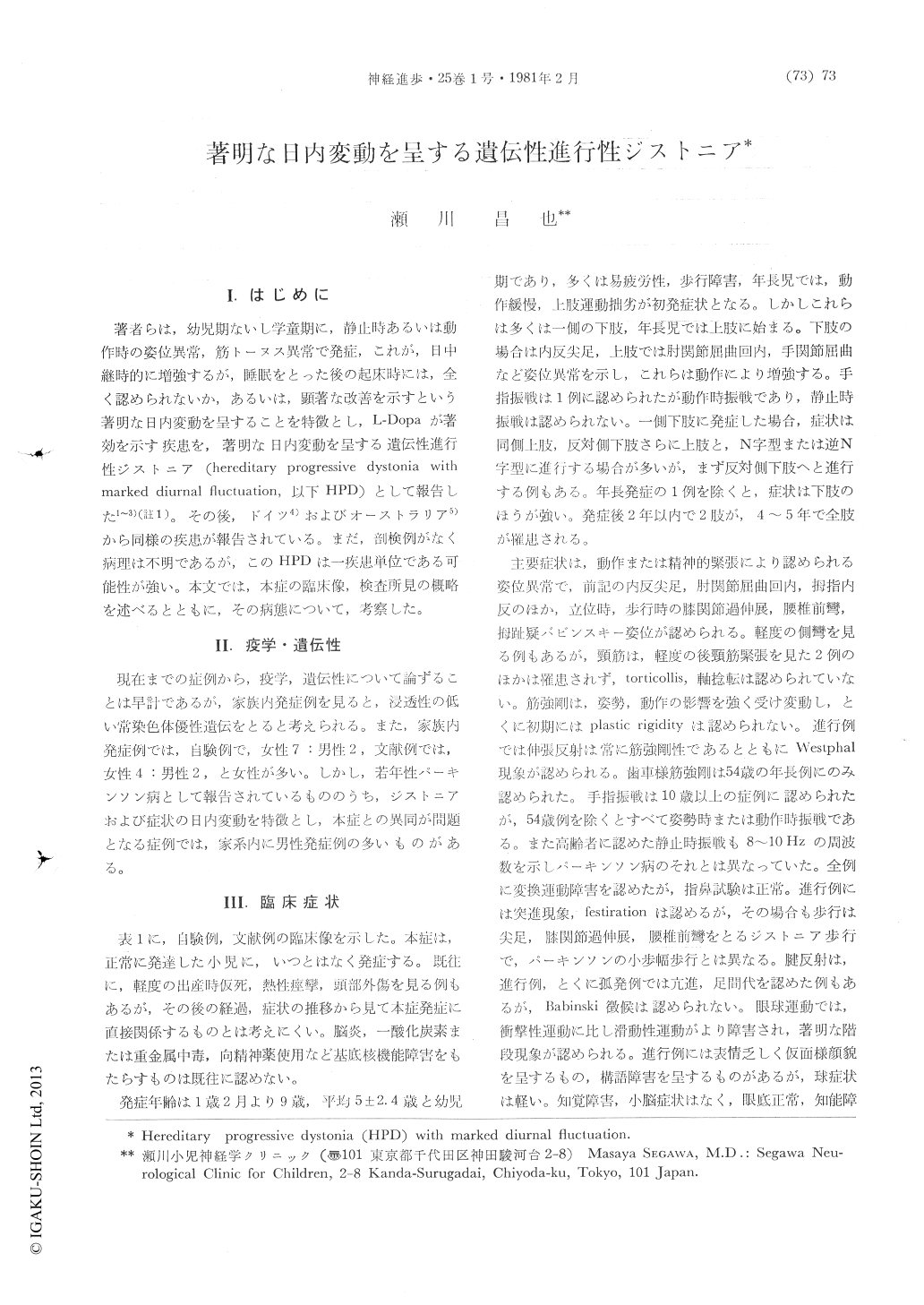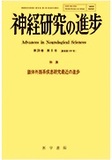Japanese
English
- 有料閲覧
- Abstract 文献概要
- 1ページ目 Look Inside
I.はじめに
著者らは,幼児期ないし学童期に,静止時あるいは動作時の姿位異常,筋トーヌス異常で発症,これが,日中継時的に増強するが,睡眠をとった後の起床時には,全く認められないか,あるいは,顕著な改善を示すという著明な日内変動を呈することを特徴とし,L-Dopaが著効を示す疾患を,著明な目内変動を呈する遺伝性進行性ジストニア(hereditary progressive dystonia withmarked diurnal fluctuation,以下HPD)として報告した1〜3)(註1)。その後,ドイツ4)およびオーストラリア5)から同様の疾患が報告されている。まだ,剖検例がなく病理は不明であるが,このHPDは一疾患単位である可能性が強い。本文では,本症の臨床像,検査所見の概略を述べるとともに,その病態について,考察した。
HPD is a particular form of dystonia with minimal or no axial involvement, asymmetrical movement, occurring in early childhood (5.4±2.2 years) and characterized by marked diurnal fluctuation of symptoms and signs; aggravated towards evening and allivated markedly in the morning after taking sleep. To these signs and symptoms L-DOPA showed marked effects.
Polysomnographical examinations of 5 cases with HPD revealed decreased phasic motor components of REM sleep. But comparing each of these sleep stages, their number progressively increased towards REM stages in later sleep cycles.

Copyright © 1981, Igaku-Shoin Ltd. All rights reserved.


